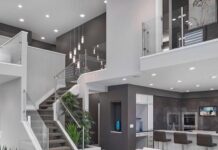By Mary Bamborough, IIDA
By now everyone knows that the baby boomer generation is graying – the first wave of baby boomers has turned 60. Their expectations of healthcare will be vastly different than those of their parents. Yet one thing is for certain – healthcare will continue to be a growing market for years to come.
Over the last few years, we’ve seen the emergence of what we call “retail” medicine. Have you noticed surgery centers, ambulatory care centers, and specialty clinics popping up in your neighborhood? As much as 75% of surgery is now performed on an outpatient basis. The convenience factor of having medical services available close to home is becoming more and more important, as well as expected.
As a result, hospitals are often left with the sickest patients. Staff members are overworked, and they need to manage interruptions and multitask while still giving the patient the best possible care. Stress becomes a fact of daily life. Many hospitals struggle to attract and retain staff.
These factors create an opportunity for healthcare design specialists to make an impact. Knowledgeable architects, interior designers, and engineers can help a facility use design as a key component in the excellent care continuum. By incorporating flexibility into a design, the hospital can be sure new technological advances will fit in their facility.
It’s an exciting time to be a healthcare design professional. Many new trends are emerging and as an interior designer specializing in healing environments, I find it very rewarding to see so many tremendous advances in this area.
One trend that’s making strong inroads into healthcare facilities is evidence-based design. This is a process that researches and measures how deliberate design factors affect medical, safety, financial, and staff performance levels – or “outcomes.” Good design can affect outcomes related to privacy, noise, access to nature, lighting and ventilation, wayfinding, and staff stress. For example, patients will typically heal faster when they have a beautiful view and a quiet place to rest. They may even require reduced pain medication. Patient falls can be reduced by improved lighting and room layout. Staff is less stressed if they are working in an efficient, functional, and appealing space.
Evidence-based design is largely supported by The Center for Health Design – a non-profit group based in Concord, California – which initiated the Pebble Project in 2000. According to its website, “The purpose of the Pebble Project is to create a ripple effect in the healthcare community by providing researched and documented examples of healthcare facilities whose design has made a difference in the quality of care and financial performance of the institution.”
To date, 44 healthcare institutions have partnered with The Center for Health Design in this research effort. Examples of the findings cited on The Center’s website include: patient falls are down 75% due to the unit’s decentralized design; overall patient satisfaction has increased to 96.7%; nursing turnover rates have decreased to 4.7%; unit design has helped reduce the caregiver workload index, resulting in improvements in nursing efficiency. More in-depth information is available at www.healthdesign.org.
Another trend is the private universal patient room. Designing a patient room using a standardized approach that makes each room identical has several advantages. Patients can stay in one location for their entire hospital stay. These rooms adapt to a patient’s changing care requirements. When each room is set up the same, it reduces errors, because equipment is in the same location in each room. Patient transfers are also lowered, since different levels of care can be addressed and situations as common as not getting along with a roommate are no longer an issue. These can all add up to financial savings for a hospital.
Sustainability is also becoming an important consideration when designing a healthcare facility. Resource consumption can jeopardize the future of our earth and its population. When selecting and specifying materials, designers may consider using materials with a higher amount of recycled content; reducing the quantity of indoor air contaminants, often referred to as VOCs (Volatile Organic Compounds); using rapidly renewable materials; and using materials produced within the facility’s region. We all need to be good stewards of this earth and work together to eliminate negative environmental effects from our buildings.
As competition continues to heat up in the healthcare arena, hospitals need to consider the design of their facilities as one way of moving or keeping themselves ahead of their competition. Supporting a quality image by enhancing convenience and efficiencies with advanced, forward-thinking design affects not only the bottom line, but also patient satisfaction, in a positive way.









































